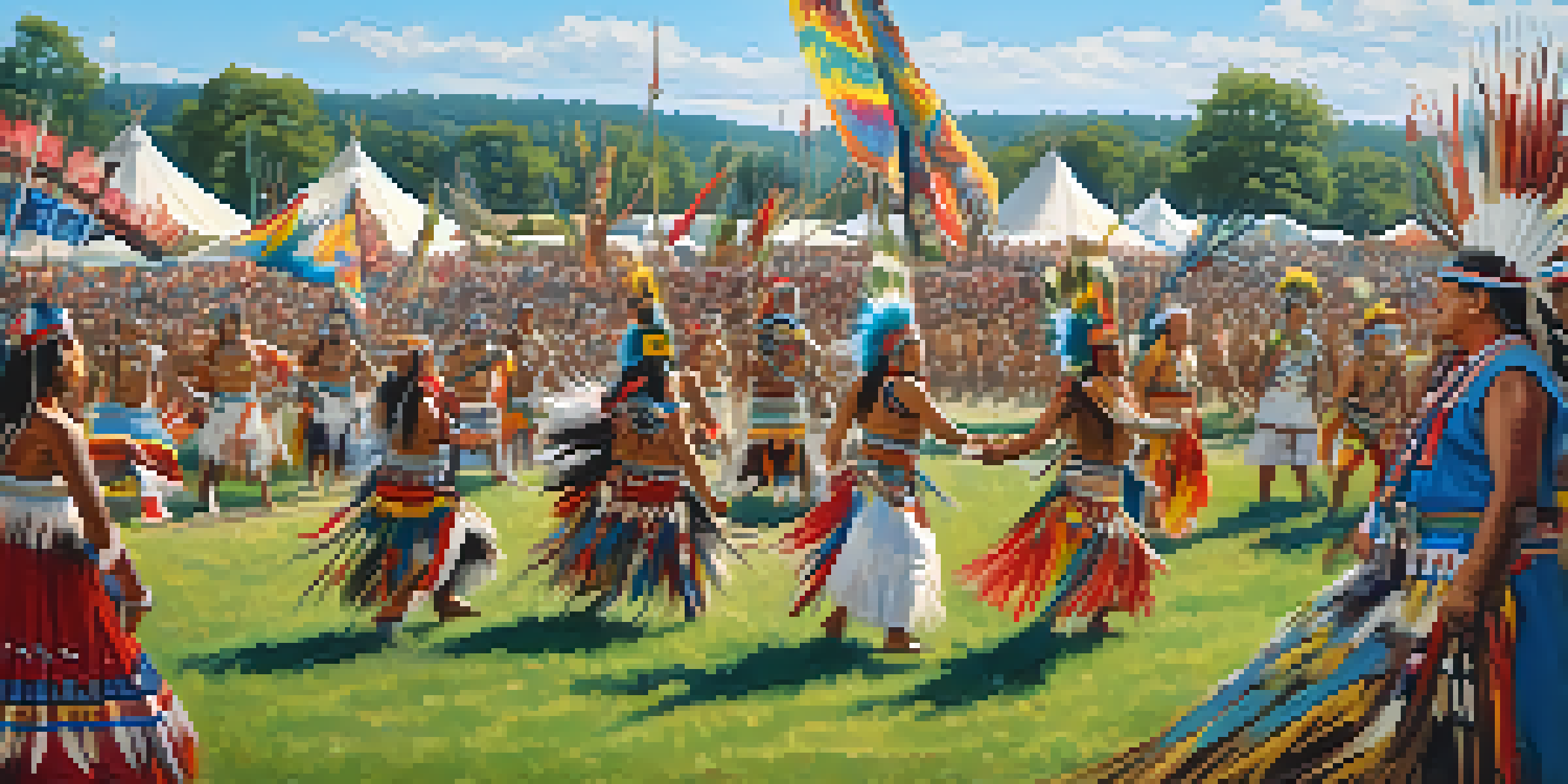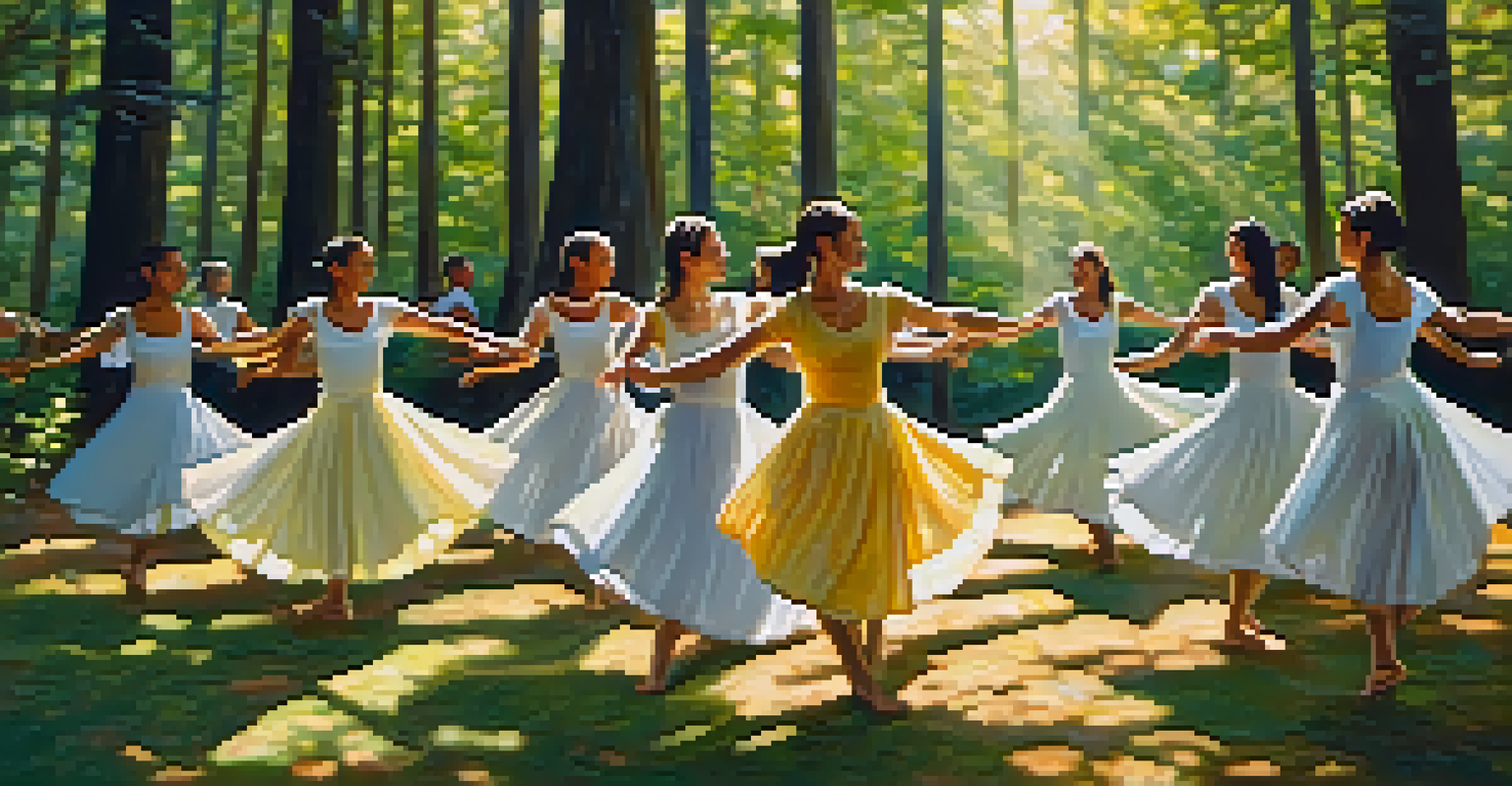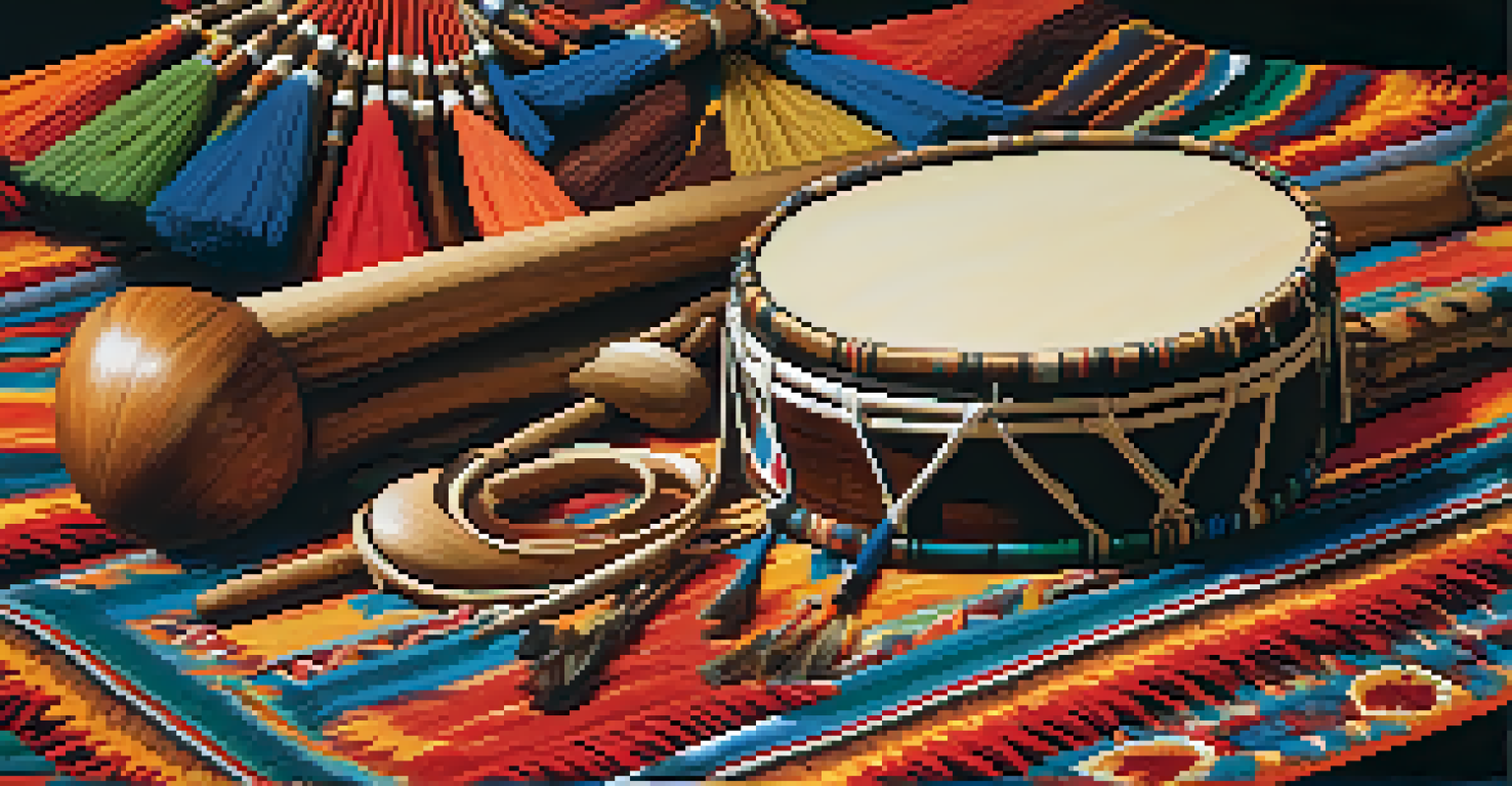Celebrating Life: Dance in Native American Spiritual Ceremonies

The Role of Dance in Native American Culture
Dance is deeply woven into the fabric of Native American culture, serving as a vital expression of spirituality and community. For many tribes, dance is not just an art form but a means of connecting with the divine and celebrating life's milestones. Through rhythm and movement, dancers tell stories that honor their ancestors, nature, and the spirit world.
Dance is the hidden language of the soul.
Each dance has its own significance and purpose, often linked to specific ceremonies or seasons. For instance, the Sun Dance, considered one of the most sacred rituals, involves elaborate movements that symbolize renewal and sacrifice. This highlights how dance transcends mere entertainment; it becomes a profound form of worship and gratitude.
Moreover, these dances often bring together community members, reinforcing bonds and shared beliefs. In this way, dance acts as both a spiritual practice and a social gathering, emphasizing the importance of unity and collective identity in Native American life.
Ceremonial Dances and Their Spiritual Significance
Ceremonial dances are integral to various Native American rituals, each designed to invoke specific blessings or healing. The Powwow, for example, is a vibrant celebration where tribes unite to honor their culture through dance, music, and storytelling. This gathering not only reinforces cultural pride but also serves as a spiritual upliftment for participants and attendees alike.

Another important ceremonial dance is the Ghost Dance, which emerged as a response to colonization and aimed at spiritual revival. This dance reflects a yearning for a return to a harmonious world, showcasing how dance can articulate hope amid adversity. These ceremonies often carry profound meanings that resonate through generations.
Dance as Spiritual Expression
In Native American culture, dance serves as a vital form of spirituality, connecting communities to their heritage and the divine.
The spiritual significance of these dances goes beyond the physical movements; they are a form of prayer and a way to communicate with higher powers. Each step and gesture is intentional, carrying messages of healing, remembrance, and thanksgiving, making the dance not just a performance but a sacred offering.
Traditional Instruments and Music in Dance
In Native American dance, music and instruments play a crucial role in setting the tone and rhythm. Drums, flutes, and rattles are commonly used, each contributing to the unique soundscape of the ceremony. The heartbeat-like rhythm of the drum is especially significant, as it symbolizes life and connection to the earth and spirit.
The dance is a poem of which each movement is a word.
The songs accompanying dances are often ancient and carry historical narratives, teaching younger generations about their heritage. These melodies are not merely background music; they are an essential part of the storytelling process that enriches the dance experience. The interplay between music and movement creates a powerful atmosphere that elevates the spiritual significance of the ceremony.
Furthermore, the choice of instruments can vary from tribe to tribe, reflecting their unique cultural identities. From the haunting sound of the Native American flute to the vibrant beats of hand drums, each instrument adds a layer of depth to the dance, making it a multisensory celebration of life and spirituality.
The Influence of Nature on Dance Practices
Nature serves as a profound inspiration for Native American dance, with movements often mimicking the elements and animals. Dancers may imitate the grace of a deer or the flow of a river, creating a deep connection between the performance and the natural world. This relationship emphasizes the belief that humans are an integral part of the ecosystem, deserving of respect and reverence.
Additionally, many dances are performed in accordance with seasonal cycles, celebrating the changing landscapes and their significance. For example, spring dances may symbolize rebirth and renewal, while harvest dances express gratitude for the bounty of the earth. This cyclical connection showcases how dance is intertwined with the rhythms of life itself.
Ceremonial Dances and Healing
Ceremonial dances play a crucial role in invoking blessings and healing, acting as a form of prayer and communal support.
Through dance, Native Americans express their love for the land and its offerings, fostering a sense of stewardship and responsibility. By honoring nature in their movements, they remind participants of the importance of living in harmony with the environment.
Healing Through Dance: A Spiritual Journey
Dance is often viewed as a healing practice within Native American spirituality. Many ceremonies incorporate dance as a means to promote physical and spiritual well-being, allowing participants to release negative energies and invite positive ones. It's a transformative process where movement becomes a form of therapy, uniting body, mind, and spirit.
For instance, the Healing Dance is performed to aid those suffering from illness or emotional distress. It is believed that the rhythmic movements help to lift the spirits of both the dancer and the afflicted, creating an atmosphere of hope and renewal. Such rituals highlight the deep understanding of the mind-body connection in Native American culture.
Moreover, the communal aspect of these dances fosters support and collective healing. When individuals come together to dance with the intention of healing, they create a powerful energy that resonates throughout the community, reinforcing the idea that healing is not just an individual journey but a shared experience.
Modern Adaptations of Traditional Dances
While traditional dances remain vital, many Native American communities have adapted these practices to reflect contemporary life. This evolution allows younger generations to connect with their heritage while also embracing modern influences. Events like inter-tribal powwows showcase a blend of traditional and modern styles, creating a dynamic cultural tapestry.
These adaptations can include new music genres, fusion styles, and even contemporary themes that resonate with today's youth. By incorporating modern elements, dancers can express their identities in ways that feel relevant and meaningful, ensuring that the tradition continues to thrive amidst changing times.
Modern Adaptations of Tradition
Native American dances are evolving to incorporate contemporary influences while preserving their cultural significance and roots.
However, respect for the origins and significance of these dances remains paramount. Educators and community leaders emphasize the importance of understanding the cultural context, ensuring that adaptations honor the spirit of the original practices rather than dilute them.
The Future of Dance in Native American Spirituality
As Native American communities continue to navigate the complexities of modern life, the future of dance in spirituality remains hopeful. Younger generations are increasingly engaging with their cultural roots, reviving traditional dances and infusing them with personal meaning. This resurgence not only preserves heritage but also fosters a sense of pride and identity.
Moreover, the rise of technology and social media has created new platforms for sharing these dances, reaching wider audiences and drawing interest from non-Native individuals. This exposure can foster greater understanding and appreciation for Native American cultures, promoting a dialogue that celebrates diversity.

Ultimately, the future of dance in Native American spirituality lies in its adaptability and resilience. As communities continue to honor their past while embracing change, dance will remain a powerful medium for connection, expression, and celebration of life.